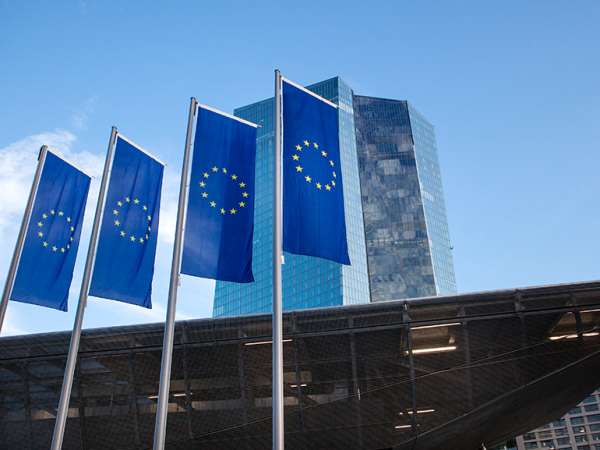ECB Cut in Focus After EU Data
The EUR/USD (EURUSD) pair declined on Tuesday, April 30, due to risk aversion and a stronger dollar. Solid Eurozone GDP and inflation data failed to support the currency meaningfully. The pair also traded lower near $1.0655 early on Wednesday, May 1, as traders looked ahead to the FOMC meeting. A similar reaction was seen following April's ECB meeting, where markets failed to respond to the central bank's signal to pivot in June. Instead, the pair moved behind the US PPI, suggesting EUR/USD may be tuned to the dollar.
European markets also closed Tuesday in the red, recording their first downbeat month since October, dragged down by autos and basic resources. April saw several European companies, including Mercedes-Benz (MBG.DE), Volkswagen (VOW.DE), Stellantis (STLA), and Air France-KLM (AF.PA), report lower profits in Q1.
Despite the upbeat economic data, most economists still expect the ECB to cut interest rates at its June policy meeting. However, the upside surprise to the CPI data appears to have caused doubts about the timing and scale of rate cuts.

Eurozone Exits Recession After Surprising Q1 Growth
So the Eurozone has exited recession after major economies France, Spain, Germany and Italy grew more than expected in the first quarter, according to data published on Tuesday. France saw a 0.2% growth while Spain grew by 0.7% and Italy by 0.3%. Germany's economy also grew by a mere 0.2%, although its performance in the final quarter of 2023 was worse than originally thought. Ireland saw the highest growth among member states at 1.1%, followed by Latvia, Lithuania and Hungary. (Source: The Guardian)
Lower energy prices, falling inflation, rising real wages, and the prospect of the ECB's interest rate cuts helped drive growth. Domestic demand also improved, driven by consumption and investment, with net trade contributing in some countries.
Eurozone inflation remained steady at 2.4% in April, matching expectations, according to a separate Tuesday data release. While the core inflation figure of 2.7% year-on-year (YOY) was slightly higher than estimates, it still showed moderating inflation from the previous month's figure of 2.9%, reinforcing the case for an interest rate cut by the ECB in June. However, underlying inflation pressures remain, and wage growth is still high. Notably, annualised monthly services inflation reached around 5%, contrasting with a low of around 1.5% late last year.
June Rate Cuts on the Horizon Amid Inflation Trends
The ECB has signalled that it would consider cutting interest rates if data indicates inflation steadily converges towards the 2% target, with April's inflation figures setting the stage for the cut. ECB President Christine Lagarde also hinted that the bank is cautiously preparing to dial back its restrictive stance. As such, markets expect a 25 basis point cut in the ECB's June meeting, taking its main refinancing rate from 4.5% to 4.25%.
Although the cut is expected as wage pressures subdue, the recent upside in inflation casts doubts about timing and scale. The ECB has said it will monitor unit labour costs closely and may move ahead with its first rate cut in June if wage growth moderates.
Some policymakers have stressed the need to see reassuring wage data. There are also concerns about rising energy costs, supply chain issues, and spillovers caused by high US inflation. However, some ECB members argued that being a step ahead of the Fed is not a problem unless the Fed continues to push back on rate cut expectations for longer.
For now, the data does not appear to be enough to change the ECB's policy stance. However, it does raise questions about how difficult it may be for the ECB to bring inflation back down to its 2% target. German inflation also rose slightly more than expected in April due to higher food and energy prices, adding to this challenge.
The Road Ahead for the ECB
Despite the euro area's real GDP broadly stagnating since late 2022, the unemployment rate remains at a multi-decade low of around 6.5%. However, the weakness in GDP growth can be overstated as firms continue to hire.
Productivity growth has also been negative for several quarters, while wage growth poses risks so long as it remains strong. Still, economic activity is expected to recover gradually after stagnating, with GDP expected to rise by 0.8% in 2024 and 1.5% in 2025.
While services activity is picking up, manufacturing continues to drag on growth. However, Isabel Schnabel of the ECB said that service inflation at 4% all year is a concern.
Overall, risks to the growth outlook remain tilted to the downside, particularly from geopolitical tensions, keeping the outlook for financial stability somewhat fragile.
Conclusion
Stable inflation data and signs of economic growth support the ECB's plan to cut rates in June. However, the recent rise in core inflation may give ECB policymakers pause for thought and reinforce the view that providing clear guidance on policy over the rest of this year may offer little benefit.
Traders may carefully note the interplay between a possible ECB rate cut and data-driven intricacies across borders, as they may create a volatile environment for the EUR/USD pair. Keeping a close eye on upcoming US and EU data releases, policy announcements, and market motions will be crucial for navigating the markets in the coming months.